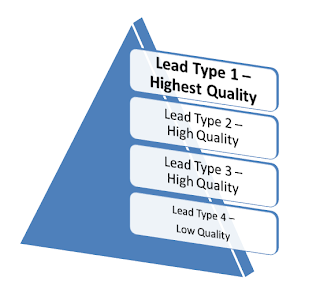How do you find the right mix between inbound and outbound marketing. I have seen the wrong model bring down marketing efforts, jobs and even entire companies.
Here are a few examples:
Example 1: Two years ago I was having a lunch with a CMO of a small company claiming to generate 90% of leads of his company from trade shows. They were working at 2-3 trade shows a week. It is obvious why that model didn't scale - CAC (Customer Acquisition Cost) was way too high. It required too many resources and time-to-revenue was too long. A year later, that CMO was gone and now the company is almost dead.
Example 2: A company called Intronis decides on the outbound-driven lead generation model. It hires lots of cold callers and does tons of trade shows. The lead generation model fails. The whole company has to go through painful layoffs. Here is a quote from an article that appeared yesterday: "Marketing is non existent…..sales team gets axed…engineer in the drivers seat. Sounds and smells like a sellout…Keep the barebones to support the product but not the partners…not so channel focused anymore. "
Example 3: On the opposite side of the spectrum, another small company I knew was generating most of their sales from blog entries. The CEO was a Blog Black Belt. It worked really well for a while. Good news - his company got acquired. The larger company added some outbound efforts. Not so good news - they are currently having hard times with the number of leads, quality and customer acquisition costs - not being able to scale neither of models.
Before giving up to inbound marketing zealots or caving in to outbound lead generation agencies, you may want to take several factors into consideration:
1. Your target buyer's persona.
- Who are the decision makers for your product / service?
- Who are the influencers?
- What are their job titles?
- What are the key challenges they are trying to address?
2. Where do they fit on the innovation curve?
Are your target buyers innovators, early adopters, or laggards? This will define to a large degree how to approach them.
Example: If you are marketing a revolutionary new product to innovators, you may want to start with an outbound networking-type campaign through your industry contacts to recruit your first customers. Later, you can integrate a targeted social media-driven PR component, as well as an inbound campaign focused on people who are looking for relevant solutions.
3. Channels where your customers find information and get influenced
Where do they look for information relevant to your offering? Is it trade shows, industry forums, search engines, communities, newsletters, etc?
Example: If you are marketing to decision-makers that don't spend much time online or you are in an industry where the phone is still a more traditional communication method, an outbound model may be the appropriate one. Conversely, if you are marketing to an audience that relies on social media and online communities for research, contracting a call center to generate leads would be an absurd idea!
4. The value of each sale and Customer Acquisition Cost (CAC)
At the end of the day, marketing is an economic tool. If a certain lead generation model is working really well, but costs too much, then it is doomed to fail. You have to find the model that works best for you - in terms of BOTH conversion rates AND costs.
Example: We were using PPC for lead gen and it was generating high quality leads that regularly converted into sales. But the cost of each sale (the marketing part) was about 200% over our target. And after trying to bring it down for a few months, we had to pause it.
Outbound call center leads generated sales that costed 500% over the goal. So, we focused on the inbound marketing leads - search engines, communities, social-driven PR, etc. This proved to be the right model, bringing down our costs significantly -- even below the target CAC.
Eventually, we revamped the messaging, did complete keyword map revamp, rebuilt landing pages, and changed 3 PPC agencies (before we found the right one)-- and "voila!" CAC is tracking right around the target!
5. Your sales team readiness
No matter how many good leads you bring, you have to make sure your sales team and channel partners are capable of converting these lead types into sales. I have seen a mismatch here causing many failures.
Example: At one of my previous companies, we started generating lots of inbound leads that needed a moderate amount of follow-up before they closed. However, our sales team had only channel experience - they did not have the skills or desire to follow-up directly with the prospects. Result = failure. Until we upgraded the sales team.
6. How easy is it to scale?
Some programs can be scaled easily. Others may require a major upgrade to scale, putting CAC out of whack, at least for a while.
Example: You may be able to scale PPC. But to substantially scale search engine-generated leads, you may need a sizable investment and patience. However, longer term results can be huge!
7. Mix and change.
My final suggestion is to constantly experiment. Marketing has been undergoing a major change over the last 3-4 years. What works today may not work tomorrow at all . So it is critical to always look for new lead channels.
First, create the foundation with the proven channels. Then, experiment with 2-3 new ones at a time. By the time one of your foundational channels stops working, you will have 2 new ones that generate even better leads!
And with that... Happy Hunting!



.jpg)

